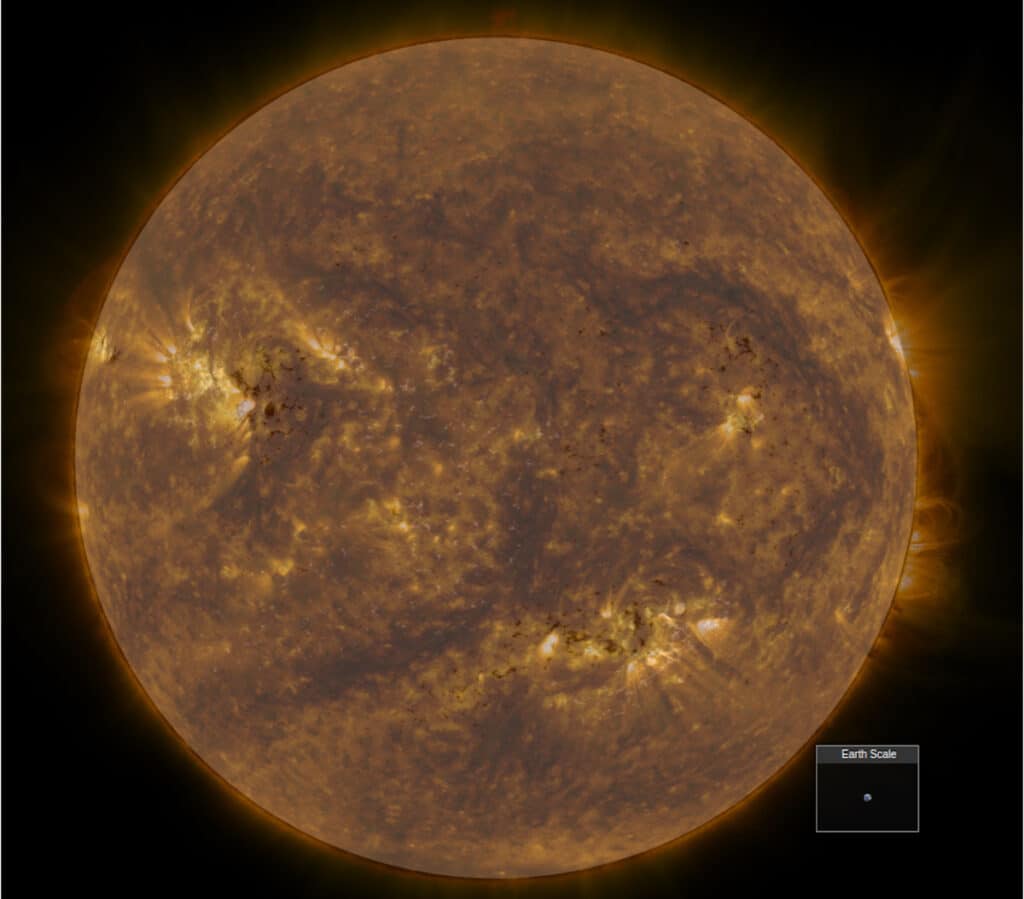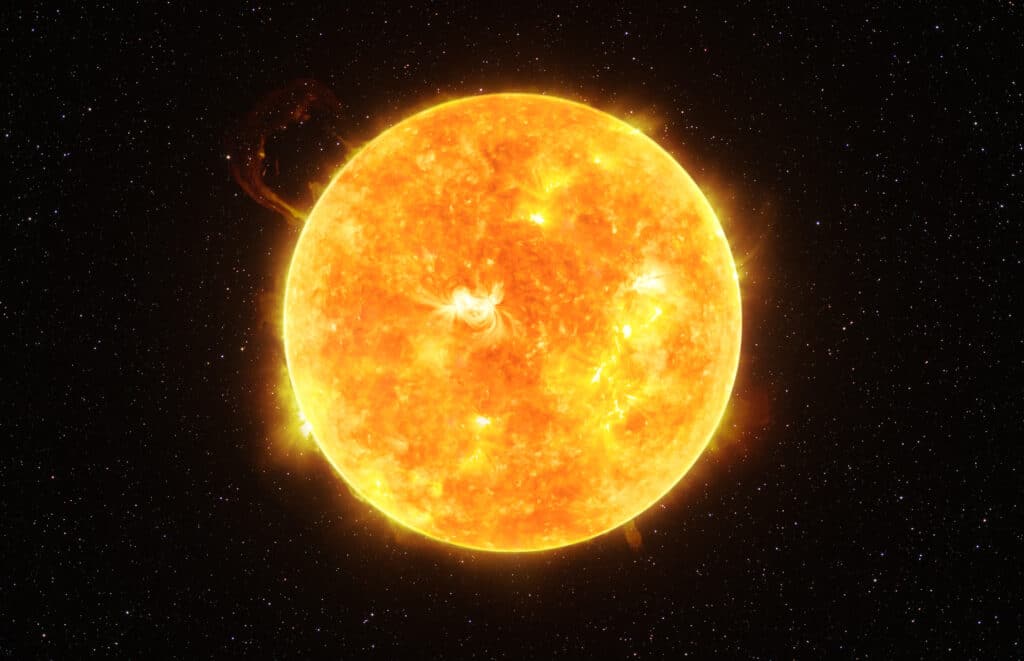A long-standing question has puzzled solar physicists for nearly a century: Why is the Sun’s upper atmosphere, known as the corona, much hotter than its visible surface? Now we have the answer and it’s a bit of a surprise.
A team of international scientists, using the advanced Goode Solar Telescope (GST) at the Big Bear Solar Observatory (BBSO), have discovered intense wave energy originating from a cool and magnetized plasma region on the sun. These waves traverse the solar atmosphere and sustain temperatures of up to a million degrees Kelvin in the corona.
This finding is a major step forward in unraveling the mysteries surrounding our closest star and may hold the key to understanding various aspects of energy transportation, dissipation, and space weather in the Sun’s atmosphere.
Using the unique imaging capabilities of the GST, the team, led by Yuan Ding, captured transverse oscillations in the darkest and coldest region on the Sun, known as the sunspot umbra. Sunspots are dark regions that form when the Sun’s strong magnetic field hinders energy supply from the hotter interior to the visible surface. The team focused on the oscillatory motions of plasma fibrils within the sunspot umbra, where magnetic fields are exceptionally strong.

These plasma fibrils are cone-shaped structures that oscillate laterally and act as conduits for fast waves. By carrying energy upwards through the magnetic conduits, these waves contribute to the heating of the Sun’s upper atmosphere. The team estimates that the energy carried by these waves could be thousands of times stronger than the energy losses in the Sun’s upper atmosphere. This energy dissipation is crucial for maintaining the scorching temperatures in the corona.
“The coronal heating problem is one of the biggest mysteries in solar physics research. It has existed for nearly a century,” says Wenda Cao, BBSO director and NJIT physics professor, in a media release. “With this study we have fresh answers to this problem, which may be key to untangling many confusing questions in energy transportation and dissipation in the solar atmosphere, as well as the nature of space weather.”
While various waves have been observed on the Sun before, the energy they carried was insufficient to explain the corona’s heating. The fast waves detected in the sunspot umbra, however, represent a persistent and efficient energy source that may be responsible for heating the corona above sunspots.
Although this breakthrough sheds light on the sunspot umbra and advances our understanding of energy transport in the solar corona, questions about the coronal heating problem still remain. The energy flux from sunspots might only account for heating specific regions, and there are other regions associated with hot coronal loops that require further explanation.
The researchers anticipate that the GST at BBSO will continue to provide high-resolution observations, offering valuable insights into the mysteries of our Sun. This ongoing research will contribute to solving the enigma of the corona’s extreme temperatures and expand our knowledge of our star’s complex dynamics.
The study is published in the journal Nature Astronomy.












